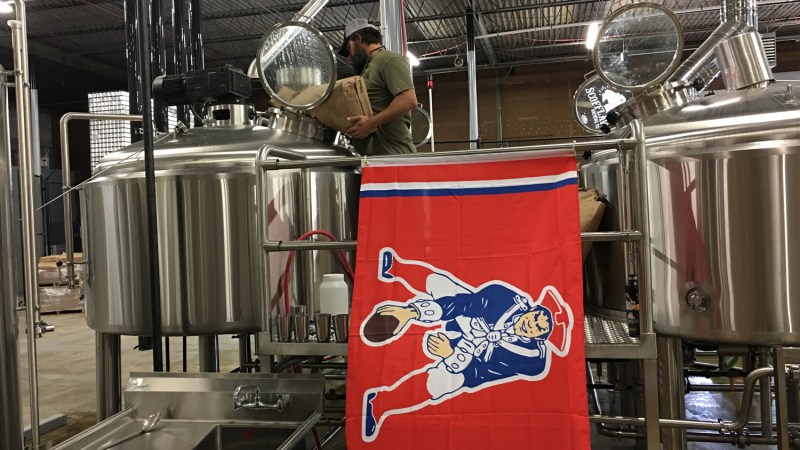Ah, the sweet taste of victory, or the bitter flavor of defeat – Super Bowl fans are likely to have different reactions to the new G.O.A.T. IPA from Scofflaw Brewing Company.
The folks at Scofflaw are making good on a Super Bowl bet with friends at Shipyard Brewing Company. Scofflaw Brewing is located in Atlanta, and pulled mightily for the Atlanta Falcons in the 2017 Super Bowl lineup. Shipyard Brewing in Portland, Maine was firmly in the corner of the New England Patriots. The two breweries agreed that the losing side would brew a special batch of beer from a recipe chosen by the winners.
Now on tap at Scofflaw Brewing – G.O.A.T., a “New England Compatriots-style IPA” brewed with malts and flaked oats grown in Maine. Shipyard head brewer Joe Rank helped develop the recipe, selecting ingredients with “never-quit charm and character.” Tasting notes say the beer starts a bit murky, but finishes strong.

“I think we’re safe in saying that our New England Patriots are the best football team of all time,” said Fred Forsley, the founder of Shipyard. “Now we get to see if our G.O.A.T. beer with Scofflaw is the greatest New England-style IPA of all time.”
In addition to brewing and serving Shipyard’s beer of choice, Scofflaw Brewery must also fly a Patriot’s flag for one week or until the batch is gone, whichever comes first. The only place you can sample the G.O.A.T. IPA is at Scofflaw Brewery in Atlanta. Their tasting room is open Thursday through Sunday.
Scofflaw Brewmaster Travis Herman said this brew can help ease the pain for Falcons fans, but can be adapted for Patriots fans as well. “For spring days when the Atlanta weather is cool,” said Herman, “we’ll use lower pressure in our kegs so Patriots fans can hold on to their glass.”


